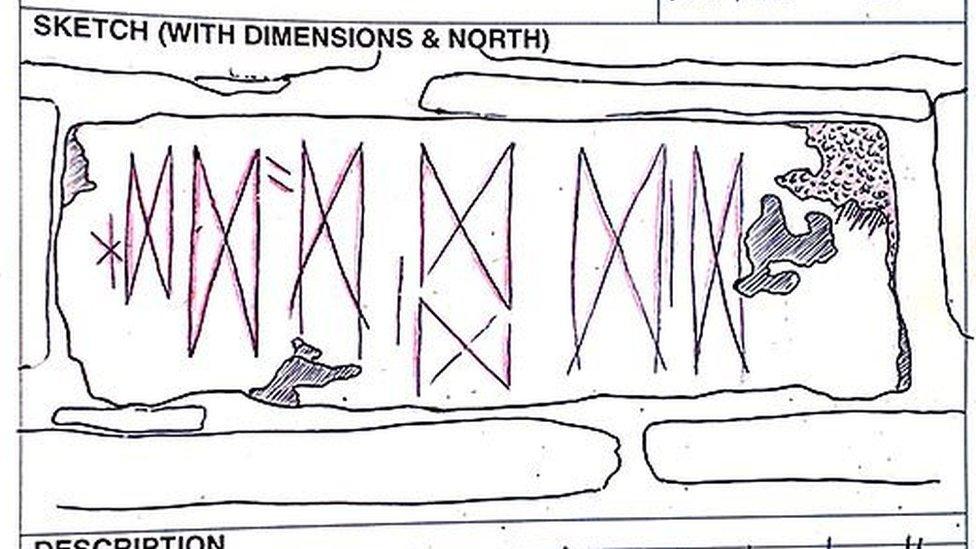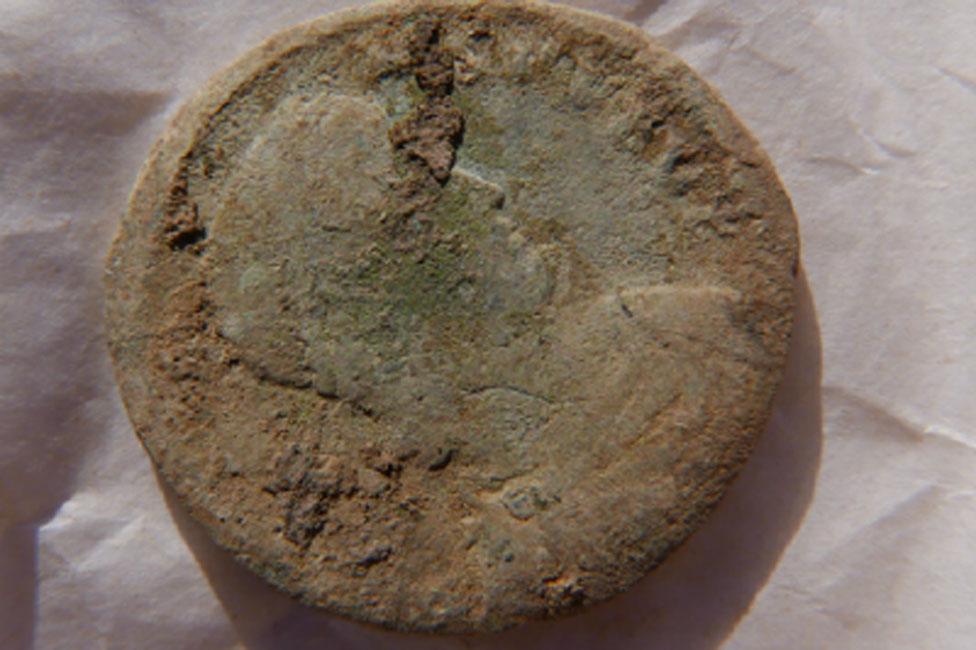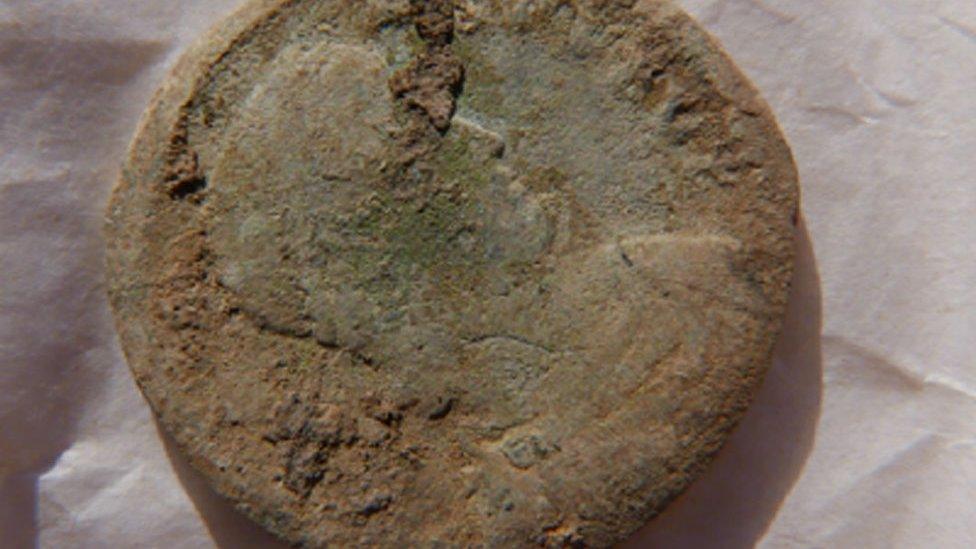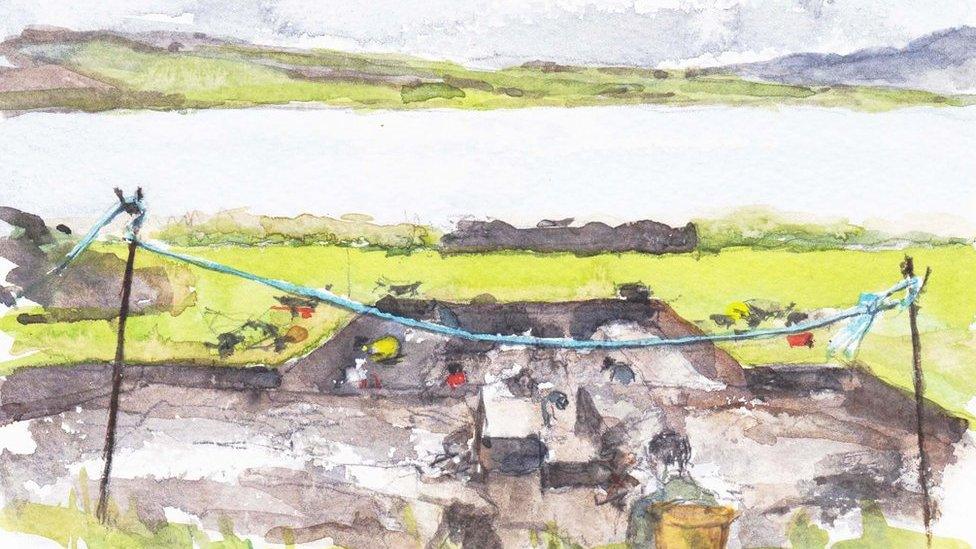Orkney Neolithic 'butterfly-like' motifs found by chance
- Published

A sketch of the designs found on a block of stone
Neolithic markings carved into a stone in Orkney that were missed for years by archaeologists have been discovered by chance.
The faintly incised "butterfly-like" motifs were revealed on Tuesday as sunlight lit up the rock at the "right moment, at the right angle".
Experts believe the marks were deliberately made to be delicate and to catch light at certain times of day.
The find was made during excavations at Ness of Brogdar.
The incisions are so faint they do not show up in photographs taken so far of the stone.
The block formed part of wall of a structure at the dig site. It has since been moved to safe location.
Archaeologists have made a sketch of the motifs, which are among a large number of Neolithic markings found on the islands.
The discovery has led archaeologists to consider re-examining other stones in case other incised marks have been missed.
Lost colour
Dr Antonia Thomas, of the University of the Highlands and Islands and an expert on Neolithic art, described the designs as being among the "finest and most beautiful" found in Orkney so far.
She said the lightly made marks may have appeared to be animated as sunlight hit them at particular times of the day.
Dr Thomas added that another archaeologist, Prof Richard Bradley, had suggested Orkney's marks may have had pigment rubbed into them, but this colour had long since been lost.
Ness of Brogdar site director Nick Card described the discovery of butterfly-like motifs as "very fortuitous" as it depended on the light hitting them at the "right moment and at the right angle".
Since 2002, Neolithic buildings, artwork, pottery, animal bones and stone tools have been discovered at Ness of Brodgar, the location of the Ring of Brodgar standing stones.
The dig, external is being led by the University of the Highlands and Islands Archaeology Institute and supported by Ness of Brodgar Trust.
The finding of the marks follows another discovery that has excited archaeologists in Orkney.
A Roman coin was found at the Knowe of Swandro on Rousay, the location of a Neolithic chambered tomb, Iron Age roundhouses and Pictish buildings.

Other new finds being made on Orkney include a Roman coin
- Published17 July 2017

- Published20 September 2016

- Published22 August 2016

- Published21 July 2016
